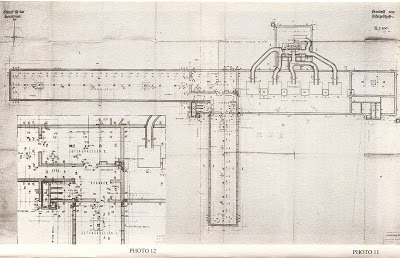Auschwitz crematoria: building plans and forensic research
Yes, dear Alexander, I was the one who, by an innocent ruse, in 1975 obtained from Jan Machalek, an official of the Auschwitz Museum, the admission that, at Auschwitz-I, Krema I had been “rekonstruiert” (rebuilt) after the war. I immediately said to him: “So then, you [meaning the Museum’s directors] have blueprints”. He replied, in a pathetic tone, “Ja” (up to then, at every turn, he had said “Jawohl”). I asked him: “Where are they?” He replied saying I should see Tadeusz Iwaszko, director of the Archives. But the next day I had to return to France.
In March 1976 I was back at Auschwitz. I visited T. Iwaszko on March 19. I told him my name, I mentioned Machalek and asked to see the blueprints. He did not utter a single word. Pointing his finger, he showed me a big table. I sat down there. He brought me volumes and volumes of documents about the Rudolf Höss trial. Everything was in Polish, a language I did not understand. Anyway, I kept turning the pages and finally stumbled on some tiny photos with captions in German. Those photos were the building plans of the five crematoria (Krema I at Auschwitz I and the four other Krema at Birkenau). I ordered copies of 116 photos for the price of 2,370 zlotys (according to an invoice of June 24, 1976 that I still have). Those drawings had been hidden since 1945. They showed that all those crematoria were perfectly normal, with typical depositories for corpses, and could not have been used for killing crowds of people with a gas that was highly inflammable and explosive (close by the ovens! Stupid Germans!)
Now see the Letter on my discovery of the Auschwitz crematoria building plans (July 13, 2009).
You have also asked me about what Germar Rudolf wrote on my discoveries.
My response is that he was quite fair. See his paper A Brief History of Forensic Examinations at Auschwitz, Journal of Historical Review, March/April 2001, p. 3-16, in which you may find these two passages:
1) Hence forensic research is exactly what revisionists, starting with Robert Faurisson, have called the search for material evidence. The revisionists’ demand for such material evidence is entirely consistent with the normal practice of modern law enforcement. And as is generally acknowledged, forensic evidence is more conclusive than eyewitness testimony or documentary evidence (p. 4);
2) Faurisson Pulls the Trigger. It took a professor of French literature to inform the world that determining whether mass murder took place at Auschwitz is a matter for forensic evidence. […]
It took almost a decade, however, for the first expert to accept Faurisson’s challenge [put forth in Le Monde, in 1978/1979] and to prepare the first forensic report on the alleged homicidal “gas chambers” in Auschwitz: Fred Leuchter’s now famous report of 1988 (p. 6).
Sorry I cannot tell you more. As you know I am nearly 87 and have six court cases ahead of me. My wife (84) and I are both in a poor state of health.
Best wishes,
R. Faurisson
December 10, 2015

